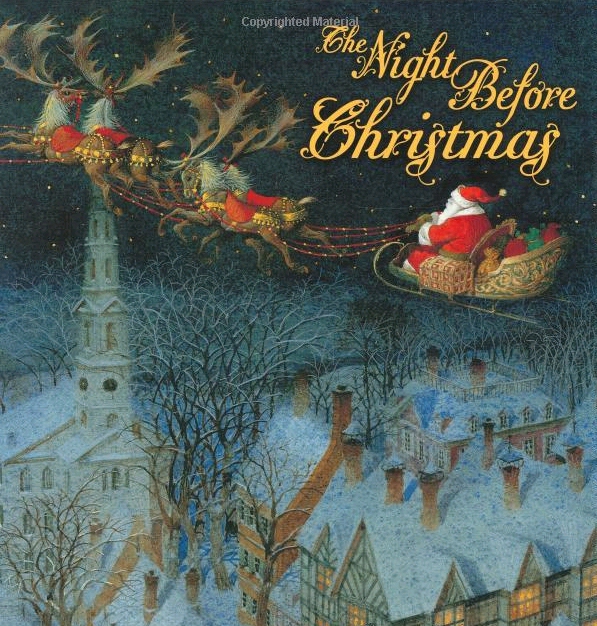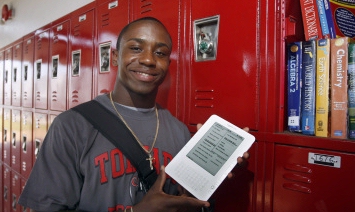
This is a sweet deal — in more ways than one. I was browsing the children’s picture books at Amazon, and discovered an unexpected announcement. “This holiday season, when you purchase any Amazon Children’s Publishing book for yourself, your friends or family, you’ll also be helping to make digital books available to children and young adults in Africa. Buy any Amazon Children’s Publishing book in print or ebook format between Saturday, December 1, 2012 and Monday, December 24, 2012 and we’ll donate an Amazon Children’s Publishing ebook to the Worldreader program.”
This was a surprise — and it gave me a warm feeling inside. Imagine reading The Night Before Christmas, and knowing that you’ve also introduced that same book to a far-away corner of the world. “I looked at a number of illustrated versions of this book and this particular one had the best pictures,” noted one reviewer on Amazon. “They are large and realistic, with beautiful with candy colors.”
Of course, then I worried that children in Africa might not be celebrating Christmas, and wondered if it’d be better to buy Little Lost Tiger or Hippo Goes Bananas. (Or even a humorous children’s book that’s titled The Hiccupotamus.) But the important thing is whatever book you buy, it’s ultimately helping children learn how to read. Worldreader is a non-profit that’s trying to make ebooks and Kindles available to both children and young adults in the “developing” world (primarily Africa).
I’ve always loved the story of this charity. In 2008, a man took his family on a tour of the world. While visiting an orphanage in South America, he asked what was behind the padlocked doors of a tin building. The answer was disturbing: it was books. In fact, it was the local library. The materials had become outdated, and the library fell into disuse.
And then he had an idea. Throughout the trip his own daughters had been reading ebooks on their digital reader. He got the idea of starting a charity with one simple goal: to use ebook technology to “put a library of books within reach of every family on the planet”. He named it World Reader.org, and four years later, Amazon’s helping them out. I love the idea that they’ll send these children a copy of the same ebooks that I’m reading.
There’s one important caveat. At first I thought Amazon would donate any children’s picture book to the WorldReader program, but they’re actually only donating the ones that are published by Amazon Children’s Publishing. (And the books have to be purcahsed through Amazon.com.) But there’s a lot of titles to choose from.
And it’s an easy way to feel like you’ve done something nice this holiday season!





